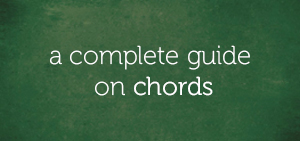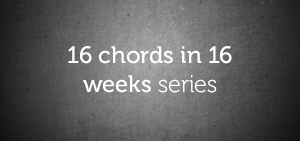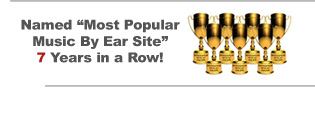The 1-chord is the most important chord in the key for a variety of reasons.
But in this lesson, I’m going to show you the top 4 reasons why the 1-chord is the most important chord in the key.
I don’t want to assume that everyone reading this lesson already know what the 1-chord is. Therefore, before we go any further, permit me to do a quick review on the 1-chord in the major key.
A Short Note On The 1-chord In The Major Key
There are seven unique tones in the major key. In the key of C major:
…there are seven unique tones and they are as follows:
C D E F G A and B
Each of these tones are associated with numbers; starting from C which is associated as the 1:
C is associated with 1
D is associated with 2
E is associated with 3
…etc
…and so are the chords derived from each of the tones.
So, the 1-chord is the chord of the first tone of the C major scale (which is C):
…and that’s the C major triad:
Now, if someone asks you what the 1-chord in the key is, you can say:
In the number system (where chords are associated with numbers), the 1-chord is the chord of the first tone of the scale.
The 1-chord is considered by music scholars as the most important chord in the key and there are so many reasons why this is so.
However, I picked out four reasons (that I’ll be sharing with you in the next segment) and I know that you’ll learn a couple of things and above all, appreciate the 1-chord.
“Why Is The 1-chord Is The Most Important Chord In The Key?”
I know you really want to know why the 1-chord is the most important chord in the major key. Well, one of the most common reasons you can easily read up is this:
The 1-chord is the most important chord in the key because it is the chord of the first tone in the key.
…and that’s not one of the four reasons I want to share with you.
I’ll start with the first reason, which focuses on the stability of the 1-chord in the key.
Reason #1 — “The 1-Chord Is The Most Stable Chord In The Key”
In the major key, the 1-chord is the most stable chord and its sound reinforces the key you’re in and also resonates the feeling of being at home.
There are seven unique chords in the key with their individual functions and when played, each of them give us their unique feeling.
If you play all the chords in the key in a succession starting from the first chord in the key, by the time you get to the first chord (aka – “the 1-chord”), you’ll see the completeness that comes with the 1-chord that no other chord in the key has.
Reason #2 — “The 1-chord Contains All The Stable Tones In The Key”
All the tones in the major key are divided into stable and active tones. The stable tones in a key are the first, third, and fifth tones in the key.
In the key of C major:
…the first, third, and fifth tones are C, E, and G:
…and these are identical with the tones of the 1-chord in the key — the C major triad.
So, all the tones of the 1-chord are stable tones and no other chord in the key can beat this. Although there are chords can have on or two stable tones in the key, only the 1-chord has all the stable tones.
Reason #3 — “Most Melodies Start From The Tones Of The 1-chord”
Most melodies to songs that we sing on daily basis start off with the tones of the 1-chord.
The 1-chord consists of the first, third, and fifth tones of the major scale and these are the tones that most melodies start from.
How any melody and try to play it in the key of C major:
…and I guarantee you that the first note would most likely be any of the tones of the 1-chord in the key (the C major triad):
The melody you just hummed is most likely to start from any of these three notes:
C:
E:
G:
If I guessed right, just be sure that this is no magic! That’s the power of the 1-chord in the major key.
Reason #4 — “Songs Usually Start And End On The 1-chord”
The first and last chord you’re most likely to play in songs across a lot of genres in classical and popular music is the 1-chord.
Almost all the hymns, congregational songs, praise songs, worship songs, etc., start and end on the 1-chord in the key and this is because it is the most important chord in the key.
While trying to learn a new song, you can always assign the first and last chord to the 1-chord and 95-99% of the time, you’ll be correct.
Final Words
The importance of the 1-chord in the major key can not be over-emphasized.
After the 1-chord, the next chord in terms of importance is the 5-chord (which is technically known as the dominant chord) and that’s going to be our focus in the next lesson.
See you then.
Chuku Onyemachi
Latest posts by Chuku Onyemachi (see all)
- The Formation Of Diminished Seventh Chords Used To Be Challenging Until I Did This
- How To Form Seventh Chords In Two Shakes Of A Dog’s Tail Using Third Intervals And The Circle Of Fifths Chart
- I Played The 13sus4 Chord And This Happened…
- How To Build Seventh Chords Like An Architect Using “Foundation And Structure” Concept
- This 4-Week Plan Will Help You Master All The Major Scales







Comments on this entry are closed.